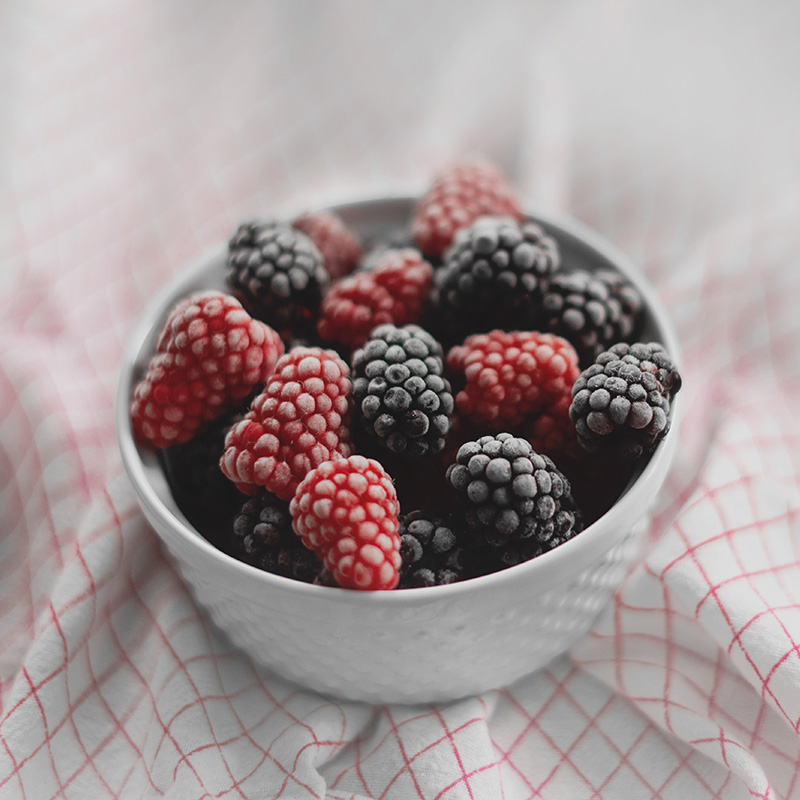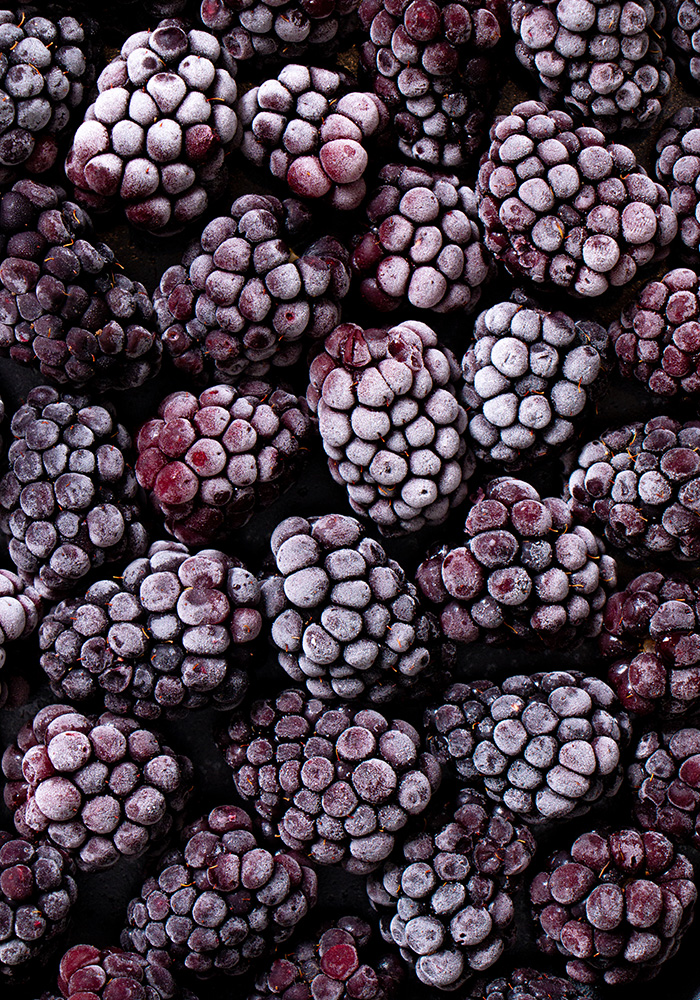Freezing Raspberries & Blackberries
summer freshness all year long
Frozen berries provide a perfect substitute for fresh berries during the off season, helping save money while producing delicious results in your berry recipes.
Below are some tips and tricks utilizing different freezing methods and best practices for using your frozen raspberries and blackberries.

home freezing tips & Tricks
- Select well-colored berries that are fully ripe. Avoid leaky, mushy, or discolored fruit.
- Before freezing, remove any berries that are immature, moldy or discolored.
- To wash berries, place in a colander and submerge two or three times in a sink full of cold water. Drain well. Dry on paper towels or terry cloth towels.
Use this if you want separately frozen berries (rather than a solid block). After washing the berries, be sure they drain well; consider placing them on paper towels or an absorbent terry cloth towel and patting very gently before freezing.
- Place the fruit in a single layer on a cookie sheet or baking tray (with raised edges).
- Place the cookie sheet into the freezer, keeping it level, and freeze until the fruit is solid. This usually takes a day or less. Avoid leaving the berries uncovered in the freezer for more than a few days to prevent desiccation (freezer burn).
- Remove from the freezer and transfer the berries into plastic freezer bags or other freezer containers. If using bags, extract as much air as possible before sealing. You can do this by using a straw and sucking the air out of the bag.
- Seal the container, label it and return to the freezer until needed.
- Try to use the berries within 6 – 8 months.
Similar to dry freezing, but berries are more likely to stick together in clumps.
- Instead of spreading on a cookie sheet to freeze, put the fresh, unfrozen berries directly into freezer containers or plastic bags.
- Remove air from bags. Leave 1/2 inch headspace in other containers for expansion.
- Label and freeze. Try to use the berries within 6 – 8 months.
Mixing the fruit with sugar draws out the natural juice from the fruit and creates a syrupy substance that covers the fruit and protects it from exposure to air. Berries frozen with sugar retain their color and texture better and can be stored longer than those frozen unsweetened. Combine berries with sugar, mixing carefully to avoid crushing the berries.
- Recommended proportions (you can experiment and vary quantities of sugar):
- 1 quart (1-1/3 pounds) raspberries or blackberries — 1/2 to 3/4 cup sugar.
- Mix carefully to avoid crushing the berries. Stir until most of the sugar is dissolved.
- Pack into suitable containers such as plastic or glass freezer containers, leaving 1/2 inch of headspace or in plastic freezer bags.
- Seal and label. Note on the package the quantity of berries and of sugar used — this will help you when you use the berries later in recipes.
- Freeze. Use within 9 – 12 months.
This method creates a solid block of frozen fruit.
- Mix up a syrup of sugar and water, heating to dissolve sugar. Recommended proportions vary from 1 cup sugar/1 cup water to 1 cup sugar, 2 cups water. Chill.
- Pack raspberries or blackberries in suitable containers such as plastic or glass freezer containers and cover with syrup, leaving 1/2 inch of headspace. Seal, label and freeze.
- Use within 9 – 12 months.

USING FROZEN BERRIES
- Frozen berries may be used in batters for cakes, muffins and quick breads. To avoid tinting the batter, give the still frozen berries a quick rinse under cold water and pat dry with paper towels.
- Tossing the frozen berries in a small amount of flour before mixing into the batter helps distribute the berries evenly in the batter.
- Frozen berries work perfectly in pies since you will be using flour or another thickener like cornstarch or tapioca to thicken the juices in the recipe.
- Berries that have been frozen during the summer may be used to make jams and jellies during the colder months. Take into account any sugar added to the berries while freezing and follow instructions for making your favorite jams or jellies with frozen berries.
- If using frozen berries in an application where you will be blending the fruits, proceed as if using fresh berries and follow the recipe instructions.
